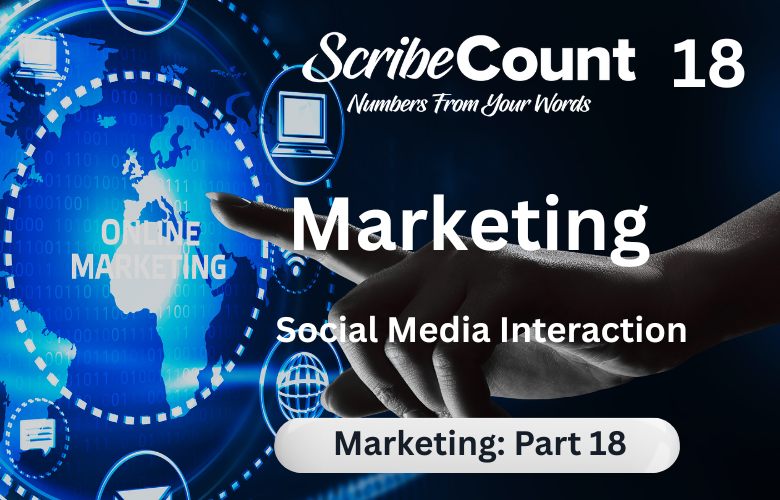Social Media Interaction for Indie Authors: Building Community, Boosting Sales
Social media interaction is one of the most powerful marketing strategies available to indie authors—but only when it’s used with authenticity, consistency, and purpose. Unlike traditional advertising or email marketing, social media isn’t about talking at your audience; it’s about talking with them. Interaction builds trust. Trust builds loyalty. And loyalty drives long-term sales.
In this article, we’ll explore what social media interaction really means, how it differs from one-way marketing, and why authors who engage meaningfully with their readers often outperform those who don’t. We’ll also examine how to strike the right balance between being personable and professional, and how to use automation tools without losing the human touch. Along the way, we’ll break down the best types of posts, how often to share them, and how to measure whether your social engagement is turning into book sales.
Why Social Media Interaction Matters
Marketing without engagement is shouting into the void. Readers don’t want to be sold to every time they open their app. They want to be entertained, included, informed, or inspired. That’s where interaction comes in. It transforms your social feed from a billboard into a conversation—and that’s where community is built.
Platforms like Facebook, Instagram, TikTok, and YouTube are more than just content hubs. They’re ecosystems where fans discover books, bond with authors, and share recommendations with others. But this doesn’t happen by chance. It happens when authors consistently interact with their readers—by replying to comments, asking questions, reposting fan content, and being visibly present. This interaction humanizes the author and makes readers feel like part of something larger.
The Difference Between Marketing and Interacting
Marketing is what you say to sell your book. Interaction is what you do to build a relationship. The key difference is intent. Marketing aims to persuade. Interaction aims to connect. Successful indie authors do both—but not at the same time, and not with the same tone.
Consider a post that simply says: “Buy my book, now on sale!” That’s marketing. Now contrast it with a post that says: “I just finished writing Chapter 23 and my main character made a choice I didn’t expect—have you ever written something that surprised you?” That’s interaction.
Interaction invites conversation. Marketing interrupts it. When used together—strategically and in the right ratio—they create a social presence that feels authentic rather than pushy.
Choosing the Right Platforms and Tools
Different platforms serve different purposes, and your choice depends on where your readers hang out and what kind of content you’re comfortable creating.
- Facebook remains a stronghold for readers of romance, mystery, and historical fiction. Groups and Pages are perfect for fostering discussion.
- Instagram is ideal for visual storytelling. Share book aesthetics, writing spaces, and daily author life.
- TikTok (via #BookTok) is massive for young adult, fantasy, and romance authors. Short videos, trends, and memes drive discovery.
- YouTube works well for in-depth discussions, writing advice, behind-the-scenes videos, and author interviews.
Services like Buffer, Later, and SocialBee can help schedule posts and automate engagement reminders—but automation should enhance interaction, not replace it.
Developing a Connection with Fans
Connection starts with consistency. Showing up every day (or every other day) with a post that reflects your voice and your values keeps your presence top of mind. But it’s the responses—your comments, DMs, and follow-backs—that deepen the bond.
Ask open-ended questions. Celebrate milestones. Share reader photos. Host small giveaways. Thank readers by name. These actions don’t cost anything, but they build priceless goodwill. A fan who feels seen is far more likely to buy your next book, leave a review, or tell their friends.
But always remember: you’re not obligated to share everything. Oversharing can create risks, especially when it comes to family, location, or personal struggles. Set boundaries early and stick to them.
Engaging With Other Authors
Supporting fellow authors is one of the smartest ways to grow your reach. When you comment on another author’s post, share their new release, or congratulate them on a milestone, their readers see your name—and may follow you back.
Cross-promotion is especially powerful when done with sincerity. Readers can smell self-interest a mile away. But when authors lift each other up, it creates a community readers want to be part of.
Joint Instagram Lives, Facebook events, and TikTok duets are simple ways to collaborate while expanding your audience.
What to Post and How Often
The best posts aren’t always about your book. In fact, they usually aren’t. Readers love behind-the-scenes looks at your process, writing challenges, favorite books, relatable memes, bookish humor, and personal milestones. These make you more human and less of a billboard.
A good engagement-to-marketing ratio is 4:1—four posts that offer value, connection, or fun for every one post that asks for something (a sale, review, signup, etc.).
As for frequency, 3–5 posts per week is a sweet spot for most platforms. More is fine if you enjoy it. Less is okay if you’re consistent. The key is regularity—not volume. You want your readers to know you’re present, but not overwhelmed by you.
Automation Without Losing the Human Touch
Automation tools can help you post consistently, but they can’t replace real interaction. Use schedulers for content but set aside 10–15 minutes a day to reply to comments, like posts, and thank followers. These small interactions accumulate into trust over time.
Metricool, Planoly, and Hootsuite are all excellent tools to plan content while tracking engagement stats. Use them to test what types of posts resonate most.
The Hazards of Oversharing
Engagement doesn’t mean complete transparency. Sharing too much—especially emotionally charged or private information—can open you up to unwanted attention, burnout, or safety concerns. Protect your boundaries. Never post anything in a moment of high emotion that you wouldn’t want immortalized.
Maintain a clear separation between author life and personal life. Talk about your books, your creative journey, and your genre interests. Keep family matters, politics, or legal disputes private unless they’re central to your brand—and even then, proceed with caution.
The Long-Term Value of Engagement
Every comment, like, and reply is a brick in your author brand’s foundation. You’re not just selling books—you’re creating relationships. Over time, a handful of loyal, interactive fans will do more for your career than thousands of silent followers.
Fans who feel connected will buy your next book on launch day. They’ll leave glowing reviews. They’ll recommend your work to their friends. They’ll show up for your livestreams and pre-order your audiobooks. And they’ll stay loyal even if your next book takes a little longer to arrive.
Don’t chase virality. Chase connection. One reader who feels heard is worth more than 100 who scroll by.

